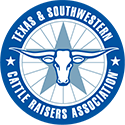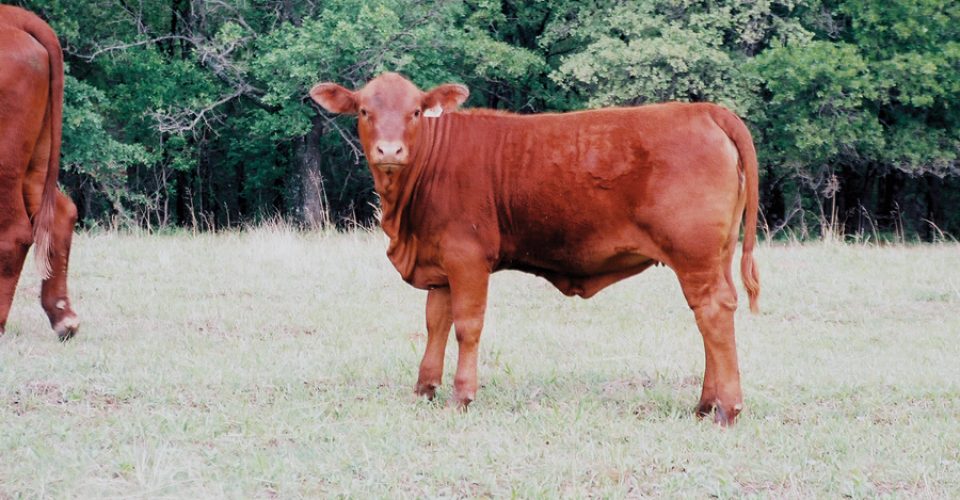Pre-Weaning Vaccination Profitability
Proper pre-weaning and weaning vaccinations help ranchers capture value.
By Nicole Lane Erceg
Can calf vaccinations pre-weaning add a premium to calves at market?
Harold Newcomb, D.V.M., technical services manager for Merck Animal Health, says that’s the wrong question to ask. Although the number of stocker operators searching for calves with health programs is growing, Newcomb says when considering pre-weaning and weaning vaccinations proper calf health is a profitability factor, but it’s not about premiums.
“I don’t think there are any premiums in the cattle business, only discounts,” says Newcomb. “When we invest in calf health we are working to capture the entire value of the animal and stop or minimize discounts.”
Health priming prior to and around weaning prepares the animal for the road ahead. Investing in calf health can have a lasting effect, impacting performance abilities through the rest of the beef supply chain.
Making the right choice
Beyond affecting profitability, properly preparing animals for the road ahead is a key component to the driver behind pre-weaning and weaning vaccinations. The goal is to prepare the calf for any pathogens they may face both on-farm and beyond.
“What we are trying to do is create enough immunity so that the calves are able to meet the challenges with minimal cost to production,” says Newcomb.
When selecting vaccines, Newcomb says to vaccinate for the disease challenges that the animal may encounter in the future, and bovine respiratory disease (BRD) is a serious impending threat. Over the years, cattle vaccines, technology and animals have improved, but BRD remains a prevalent issue.
Newcomb says that once an animal has a pneumonic episode of any magnitude, it’s going to have an effect on the animal’s production for the rest of its life. Depending on the severity of the issue, he says the production decrease could manifest in a 25- to 100-pound weight reduction through the life of the animal. In an industry where pounds equal profit, that is a significant loss.
“It’s important for productivity and profitability to keep animals healthy, especially lung healthy,” says Newcomb.
Ranchers primarily have 2 choices when deciding on vaccine types, modified-live or killed. Killed vaccines contain the pathogen in the vaccine, but it is no longer living. In modified-live vaccines, the pathogen is still alive but has been rendered inactive. This means that the virus has been modified so it no longer has the ability to cause disease. Newcomb says both are fine choices for pre-weaning and weaning vaccines, but recommends ranchers pay close attention to labels to ensure a proper immune response. While modified-live vaccines just take a one-time administration to gain immunity, killed vaccines require that the vaccine be administered at least twice and take longer to build strong immunity.
“Understand that with killed vaccines it’s going to take time after you vaccinate with the second dose before you build good immunity,” says Newcomb.
Proper administration tips
Newcomb recommends giving first vaccines at 2 to 3 months of age, around branding, along with their first viral respiratory vaccines, a Pasteurella vaccine administered intranasally, and a blackleg vaccine designed to be less stressful on the calf.
He recommends deworming 3 to 4 weeks before weaning. Worm infections can suppress the immune response, making vaccines less effective. At this time, he advises vaccinating if using a modified-live or administering the second dose if using a killed vaccine.
As for vaccine storage after use, Newcomb says that once a bottle is opened, use what is needed and then discard, even if it’s a killed vaccine.
Though it can be tempting to purchase vaccines in large quantities in bulk to save money, Newcomb recommends that ranchers with lower herd numbers purchase 10-dose vaccine bottles and use a different needle and syringe for every 10 animals to cut down on disease transmission. This practice also falls in line with his philosophy on vaccine storage: don’t. He says to discard any unused vaccine after the bottle has been used, even if it’s a killed vaccine.
“Once we go in and out of that bottle, it’s contaminated,” says Newcomb. “If we stick it in the refrigerator and come back a few months later and use it again, we’re more apt to see knots and abscesses.”
Proper application of the vaccines, vaccine storage and administration all go back to Newcomb’s theory on discounts. If not done correctly, unclean needles, improper storage or administration could cause other discount factors, not allowing ranchers to obtain the full calf value.
A key component to a successful calf health program and one that will aid in cattle marketing is good record keeping. Newcomb suggests using processing maps to track what pharmaceutical products were administered, who administered them, where on the animal the product was given and the weather conditions during the time of application. This allows ranchers to track time of administration, but also makes it easy to determine what may have affected an animal if it falls ill or shows abscesses in the injection site area.
Newcomb says that all ranchers should get their Beef Quality Assurance (BQA) certification. He explains that BQA certification teaches proper treatment procedures and sends a marketing message.
“BQA is our way of saying to the public that we know what we are doing and have been trained on how to produce a wholesome, safe product in a humane way,” says Newcomb.
Understanding vaccination value
For ranchers readying to market this year’s calf crop, contemplating vaccination and timing can be a decision that makes or breaks profit potential. According to Newcomb, ranchers who run successful pre-weaning health programs consult a veterinarian when planning their vaccines and ensure that their product choice is aligned with the desired outcome.
“You need to be especially in tune to the vaccines you’re giving and what they will do,” he says.
Calves that are weaned and shipped simultaneously battle the combination of travel, new environment, a different food, an unfamiliar water source, commingling and separation anxiety — a recipe for disease. Quality vaccination and health programs help prepare the animal for the stresses it will endure during the weaning and post-weaning process. Newcomb says that it’s this preparation that helps capture calf value.
“Most weaning and vaccination programs should pay for themselves in terms of weight gain,” says Newcomb.
Ranchers can create profitable pre-weaning and weaning calf health programs by following Newcomb’s fundamental practices of consulting a veterinarian, using products that will create the desired immunity, and correctly administering products that will have a low impact on stress.
“Understand the products you are putting into your cattle,” says Newcomb. “Make sure the products are administered correctly and document the process.” ❚
“Pre-Weaning Vaccination Profitability” is excerpted from the June 2017 issue of The Cattleman magazine.

